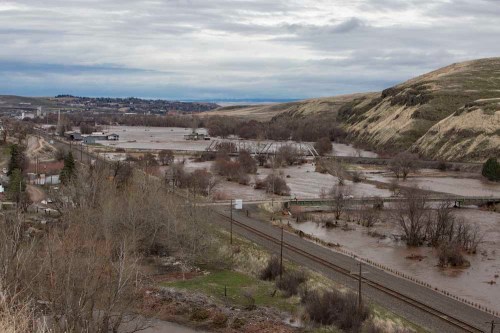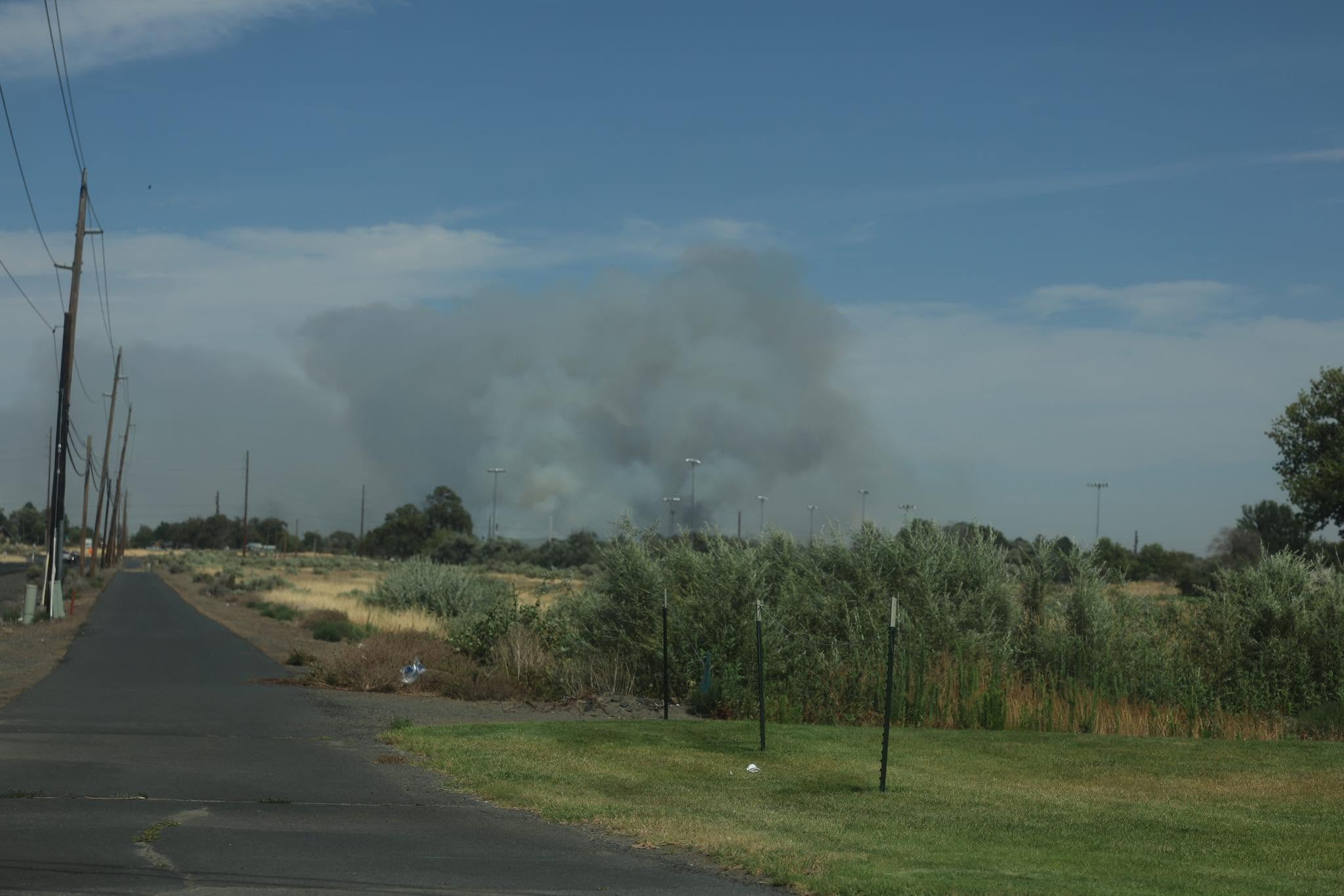Farmers, irrigation district overcome double dose of flooding in 2020
Published 8:55 am Monday, October 12, 2020

- Water from the Umatilla River floods out over a large portion of the lowlands near Rieth on Feb. 7, 2020.
ECHO — In a year full of challenges, some agricultural producers in Umatilla County had to contend with floodwaters encroaching on their property and threatening their growing operations — not once, but twice — in 2020.
In February, an untimely rainstorm combined with snowmelt from the Blue Mountains and flooded areas along the Umatilla River and nearby streams and creeks, causing millions in infrastructure damage and personal losses throughout the county.
And then after recovering from that hit, historic levels of rainfall for the area in May again flooded portions of the county.
Noel Ramos Scott runs a farming operation with her family in the Echo area. For her and other farmers in the area, the February floods knocked down fences, damaged ditches, took out chunks of land and left croplands scattered with debris. By the time the first steps of recovery had been finished over the spring, more floodwaters hit and washed away some of that progress.
“We plugged holes in the levees from the back side, but they were breached again in the May flood,” Scott said. “Between the floods, we had farmed a portion of our land. We were extremely fortunate that the May flood didn’t completely destroy the new seeding or wash all of that topsoil away.”
Scott said they repaired the holes breached in February in about a month while damage to their farm’s irrigation system delayed watering for about another month. In total, Scott said it’s still unknown how much the flooding and subsequent delays due to repairs will impact their crop yield for the year.
Even after the surface-level damage had been mostly cleaned up and repaired, the flooding helped weeds sprout on Scott’s land where previously they hadn’t, and rung up more costs in chemicals to fight them.
Scott said her family’s operation was more fortunate than many others in the area and so far they’ve managed to clear the debris, rebuild most of their lost fences and repair the irrigation delivery system.
The year’s floods didn’t just threaten individual operations.
The Hermiston Irrigation District serves about 10,000 acres worth of land outside of the city’s limits and had to deal with a litany of damage and challenges brought by the flooding right after recovering from McKay Creek flooding in 2019.
“We had just finished our repairs for the 2019 flood when the 2020 flood hit us,” said Annette Kirkpatrick, the irrigation district director. “So, when that came in we didn’t have enough time to repair the Maxwell Diversion to use it for the 2020 irrigation season.”
The Maxwell Diversion runs along Hinkle Road and directs water from the Umatilla River, and suffered “significant damage” in February, according to Kirkpatrick. Debris had to be removed while canals, ditches and the adjacent road had to be repaired, but that couldn’t be accomplished in time for the 2020 growing season.
“We didn’t have an additional water source from the Umatilla River so we had to compensate by diverting more water out of the [Cold Springs Reservoir],” she said.
In an area near Feedville Road, Kirkpatrick said one delivery canal has lost its structural integrity for about a quarter-mile and is falling off the river’s embankment, which has left that stretch completely inoperable.
The irrigation district is working on a bypass to replace that section of the system and exploring additional projects to try and mitigate the risks of future floods, though those options are limited due to the set placement of dams along the river.
In the short term, Kirkpatrick was thankful the irrigation district was able to find workarounds in 2020 so that the area’s agriculture wasn’t left unwatered.
“That would have had a significant impact on our economy and to our agriculture and growers if they weren’t able to get water,” she said.
In the months since the flooding, Scott and other Echo and Stanfield-area property owners along the river have formed the Mid-Umatilla River Coalition, also known as MURC, to work jointly on engineering projects to mitigate the threats of future floods.
But in 2020, Scott and others bore the brunt of the year’s floods and are still trying to balance the loss of income from crop production with the mounting costs to repair the damage that remains.
“We are not able to repair everything that needs done, and the cost of repairs exceeds our normal yearly income,” Scott said. “We have had to prioritize the repairs, and cross our fingers that we have chosen the most critical ones.”









